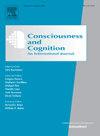ERP responses reveal different neural mechanisms for perception of electrical and tactile stimuli
IF 2
3区 心理学
Q2 PSYCHOLOGY, EXPERIMENTAL
引用次数: 0
Abstract
EEG studies have identified ERP components at various latencies as predictors of conscious somatosensory perception, but it remains largely unclear which factors are responsible for this variation. Here, for the first time we directly compare the event-related potential correlates of stimulus detection under tactile versus electrical peri-threshold stimulation using single-trial modelling and Bayesian model selection within and between groups, while controlling for task-relevance and post-perceptual processes with a visual-somatosensory matching task. We find evidence that the P50 component predicts conscious perception under tactile, but not electrical stimulation: while electrical stimulation evokes a P50 already for subliminal stimuli and activity in this time window is best explained by stimulus intensity, there is almost no subliminal P50 for tactile stimulation, and detection best explains the data. In contrast, the N80 and N140 components correlate with detection and detection probability in both stimulation groups. The P100 and the P300 were modulated by detection in the tactile group, and by detection probability in the electrical group. Our results indicate that cortical processing in somatosensory target detection partly depends on the type of stimulation used. We propose that electrical stimulation of afferent nerve fibers that do not give rise to conscious perception may mask the P50 modulation associated with conscious somatosensory detection, and might contribute to subliminal evoked cortical responses.
ERP反应揭示了电刺激和触觉刺激感知的不同神经机制。
脑电图研究已经确定了不同潜伏期的ERP成分作为有意识体感知觉的预测因子,但仍不清楚哪些因素导致了这种变化。在此,我们首次使用单次试验模型和贝叶斯模型选择在组内和组间直接比较触觉和电阈附近刺激下刺激检测的事件相关电位相关性,同时通过视觉-体感匹配任务控制任务相关性和后知觉过程。我们发现有证据表明,P50成分预测了触觉下的意识知觉,而不是电刺激下的意识知觉:虽然电刺激唤起了阈下刺激的P50,并且在这个时间窗口内的活动最好用刺激强度来解释,但触觉刺激几乎没有阈下P50,检测最好地解释了这些数据。相比之下,在两个刺激组中,N80和N140成分与检测和检测概率相关。P100和P300在触觉组通过检测调制,在电组通过检测概率调制。我们的研究结果表明,体感目标检测中的皮质处理部分取决于所使用的刺激类型。我们提出,对传入神经纤维的电刺激不会产生有意识的知觉,可能会掩盖与有意识体感检测相关的P50调节,并可能有助于阈下诱发的皮层反应。
本文章由计算机程序翻译,如有差异,请以英文原文为准。
求助全文
约1分钟内获得全文
求助全文
来源期刊

Consciousness and Cognition
PSYCHOLOGY, EXPERIMENTAL-
CiteScore
4.30
自引率
8.30%
发文量
123
期刊介绍:
Consciousness and Cognition: An International Journal provides a forum for a natural-science approach to the issues of consciousness, voluntary control, and self. The journal features empirical research (in the form of regular articles and short reports) and theoretical articles. Integrative theoretical and critical literature reviews, and tutorial reviews are also published. The journal aims to be both scientifically rigorous and open to novel contributions.
 求助内容:
求助内容: 应助结果提醒方式:
应助结果提醒方式:


